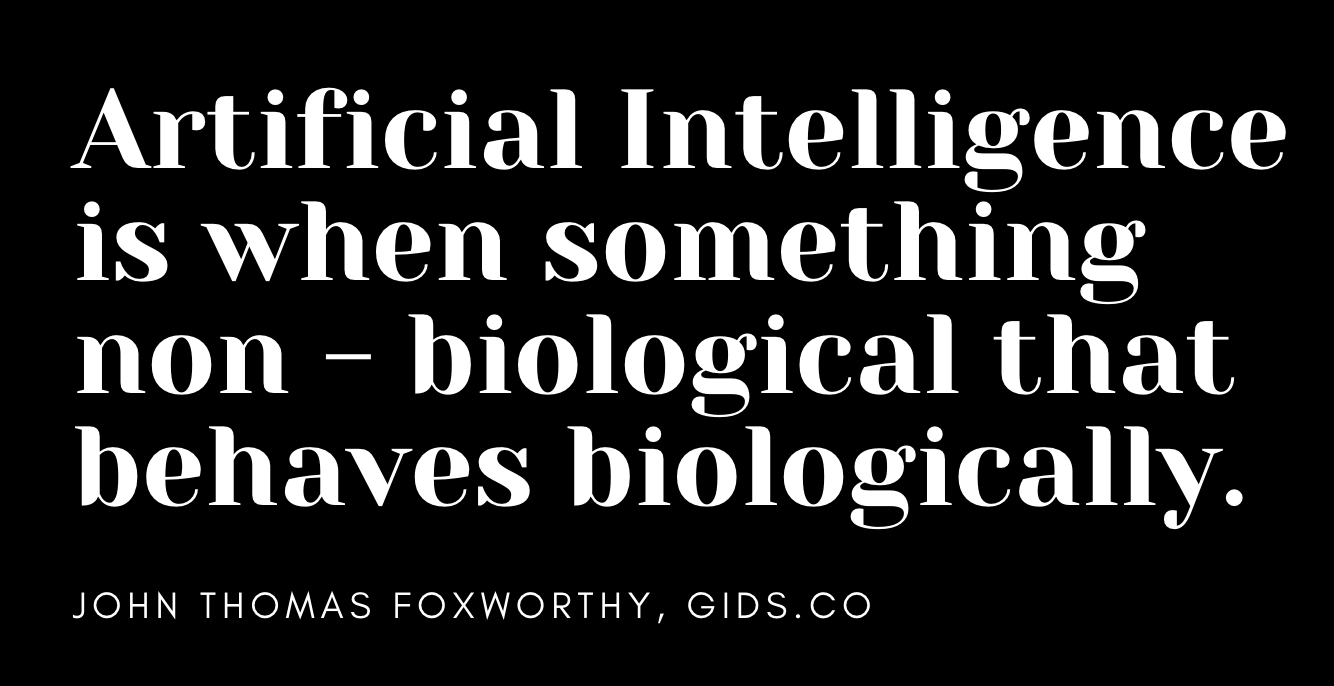A Universal Definition of Artificial Intelligence
A Universal Definition of Artificial Intelligence
Image by Anonymous
Everybody wants to learn about Artificial Intelligence, but only a few can define it properly. Trying to leverage Artificial Intelligence amidst hype without concrete outcomes in cross–functional teams lead to engineers building randomly as priorities drift, marketers spin capabilities that never emerge, and sales promises leave clients disillusioned. Success demands specificity.
Image by GIDS.CO
Human beings, animals, and machines all have a set of actions that can be generalized to at least one behavior, and behaviors are enabled by intelligence. Intelligence can be defined in many ways, but it cannot be isolated from behavior, and behavior cannot be separated from actions. We can classify a behavior type if we aggregate machine learning functions in Artificial Intelligence with animal and human actions. For example, humans, animals, and machines share the act of viewing and identifying objects.
Artificial Intelligence, or what used to be called Neural Networks decades ago, is the biological mimicry of human beings' natural intelligence, behaviors, and actions. We do not have the energy source for all the natural intelligence to be mimicked in artificial intelligence, such as a human-like robot, but we have had substantial partial success. Image detection with deep learning, summarizing a page of text with natural language processing, and more. Here are a few more examples . . .
To learn more, click on https://www.learngids.com
To cite this article, use the following:
Foxworthy, John Thomas. “A Universal Definition of Artificial Intelligence.” The Global Institute of Data Science, December 2023, https://gidsco.substack.com







